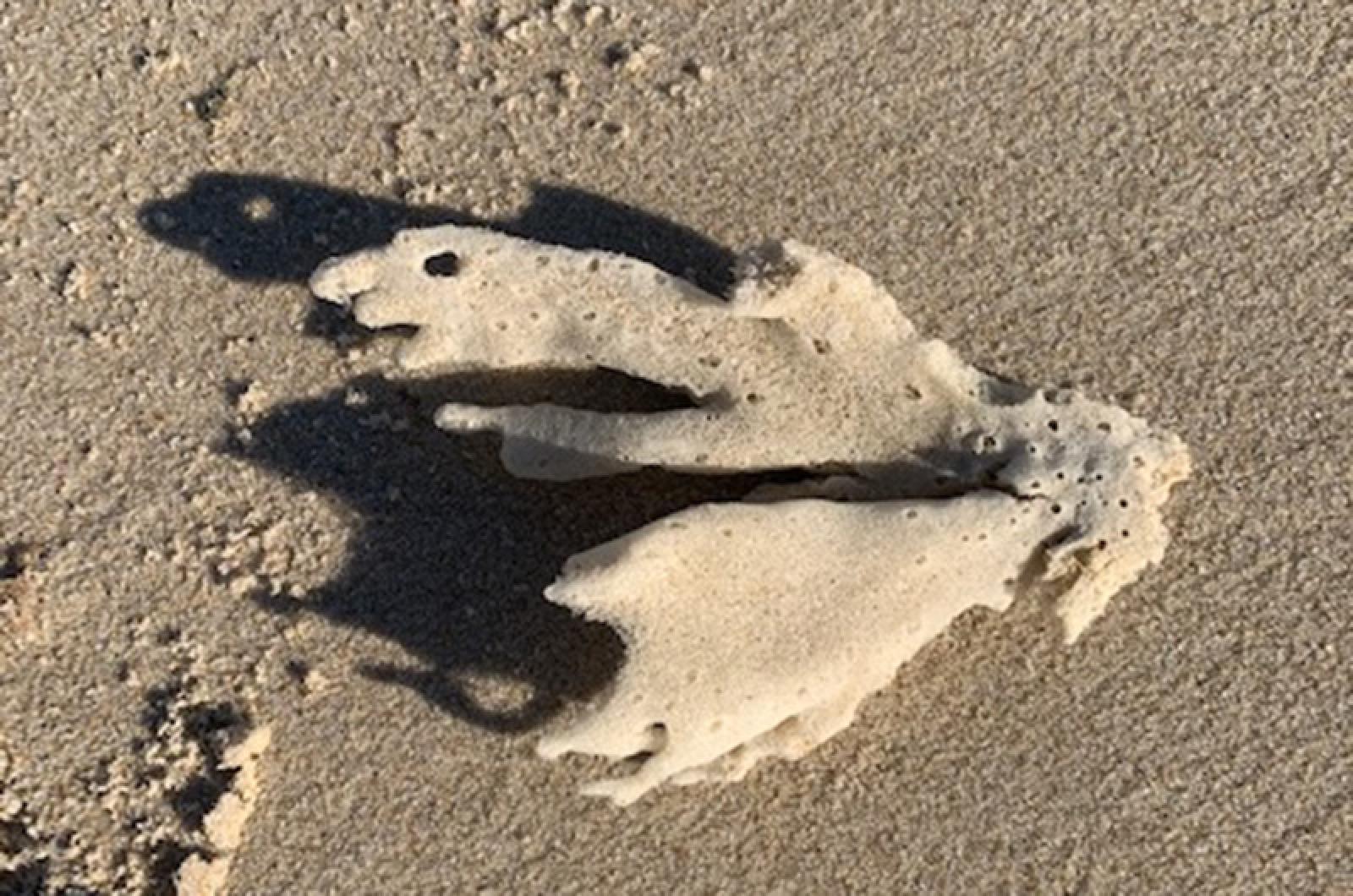A walk along the beach last weekend seemed safer than a dip in the ocean, with the triple threat of sharks, siphonophores (man-of-wars), and cyanobacteria. No matter the challenges on the beach or in life, humans have the capabilities to adapt, mitigate, and process our way through our troubles.
We need those skills these days.
In many respects, we are lucky as not all animals have the same abilities. Marine sponges, for example, are stuck and have no choice other than to suck it up.
Sponges are sessile and simple, yet curious creatures that usually don’t usually worry beachgoers. They lack the frightening mouth and sharp teeth of the shark. They lack the killing stinging tentacles of the siphonophores, and they lack the disturbing symptoms of cyanobacteria.
First, and most fascinating, is the fact is that sponges are animals, perhaps the simplest ones — but animals nevertheless. These animals lack the advantages of the more complex ones. Sponges can’t take heart in that fact, since they lack circulatory systems. Plus they do without digestive and nervous systems.
Nor do they have any tissues or organs, like other animals.
Cells, pores and channels allow sponges to move water through their bodies. As the water flows through, they filter food, obtain oxygen and eliminate waste.
Richard Dreyfuss (as Hooper) in Jaws, might have been speaking of sponges rather than great whites when he warned, “Out there is a perfect engine, an eating machine that is a miracle of evolution.”
Because they are, really, perfect eating machines. A sponge’s filtering capacity is epic. Some species can pump 50,000 times their own volume of water per day. Fifty thousand times! If humans had similar talent, one person would be able to drink and eliminate 900,000 gallons per day. There was a French writer, physician and monk who once humorously explained that he “drink(s) no more than a sponge,” but he doubtfully knew the facts.
And, simple as they seem, sponges have reproductive capabilities that provide a few means of propagation. Both male and female parts are found on an individual sponge, and they reproduce sexually after sperm is released into the water and finds the female part of another sponge. A free-floating larva is created from the union, and will eventually settle and attach to something and become a sessile adult sponge. Asexual reproduction or budding is also possible when a piece of sponge breaks off and becomes its own organism.
With all of these unique characteristics, it is no surprise that sponges have spawned a celebrity among them. Stephen Hillenburg, animator and marine science educator, created the most famous sponge of all times. He explained “I wanted to do a show about a character that was an innocent, and so I focused on a sea sponge because it’s a funny animal, a strange one.”
SpongeBob SquarePants was born.
Millions of kids can’t be wrong. And a silly sponge might just embody what we need during the strangest year the world has ever seen — a hearty belly laugh.
Suzan Bellincampi is director of the Felix Neck Wildlife Sanctuary in Edgartown, and author of Martha’s Vineyard: A Field Guide to Island Nature and The Nature of Martha’s Vineyard.







Comments
Comment policy »